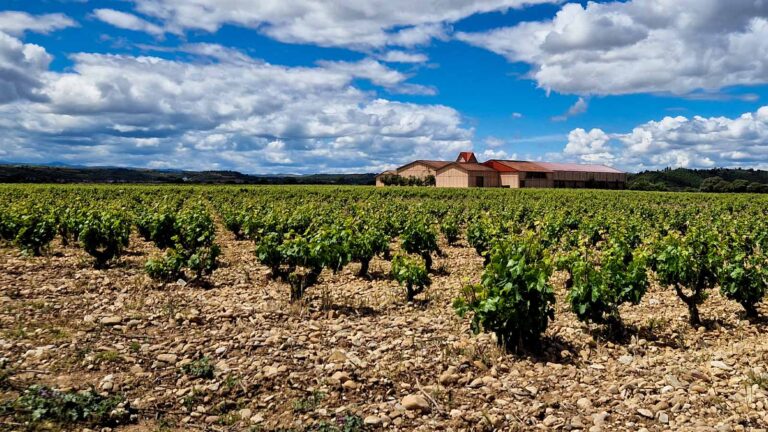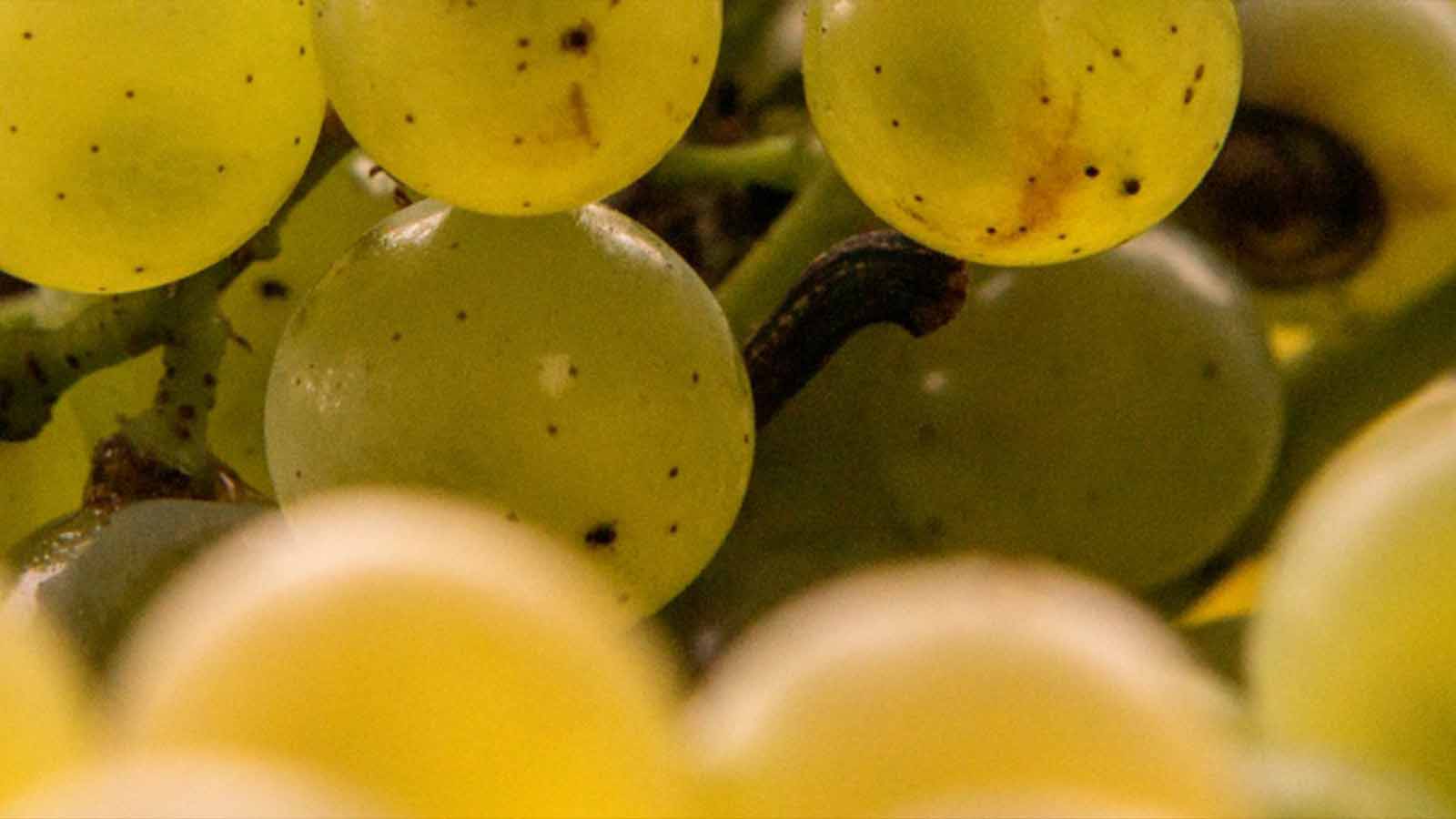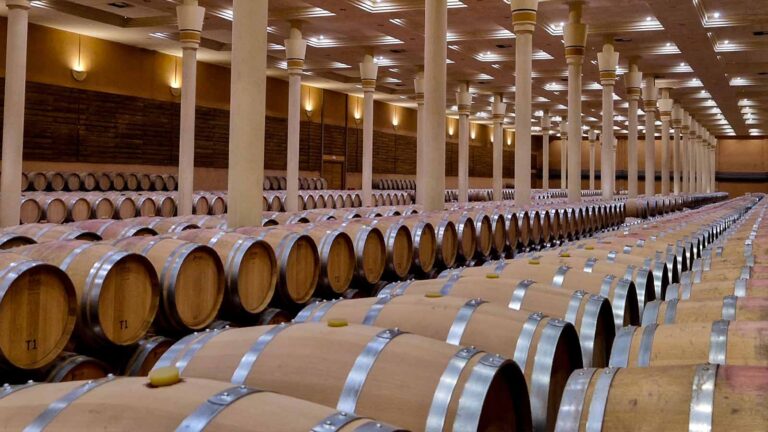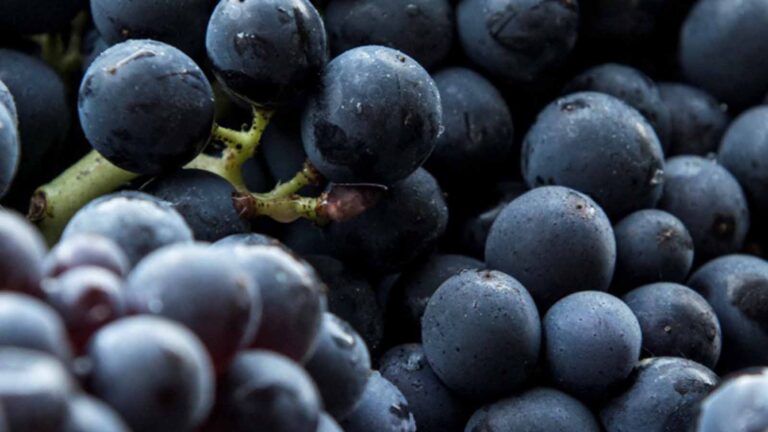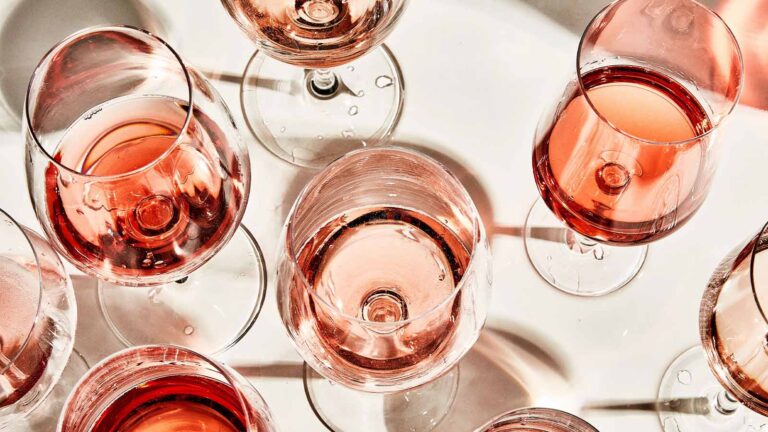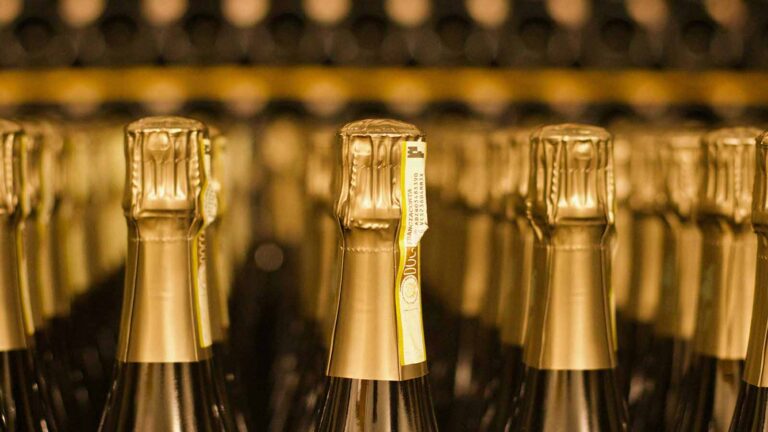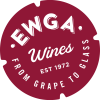The first stage of controlled vinification is to crush the grapes and release the pulp and juice, making them easier to press. A key decision at this stage is whether or not to remove the stems. Left with the grapes, stems allow the juice to drain more freely during pressing. For some wines, where white wines are made from red grapes, crushing of any kind is avoided (as it would add red colour to the wine), and grapes go whole into the press.
Delaying fermentation until after pressing is essential, therefore where the must temperatures are high the juice is cooled by pumping it through ‘must chillers’.
White wine grapes are always pressed. Better quality juice results, when pressing is gentle. If too aggressive the pips and stems break and bitter astringent flavours, which overpower those natural in the grapes are released. Good results are achieved with pneumatic presses, which are now replacing the traditional vertical wooden ones. Both types yield juice of the highest quality and also enable the separation of different quality pressings. The juice is drained from the press into settling vats where the kin, pip and stem fragments remaining in suspension after pressing will settle to the bottom of the vat. The clean juice is then racked into separate vats ready for fermentation to begin. Centrifuging can also be carried out at this stage to clarify the wine, but it is an aggressive process, removing all the larger particles the must, even yeast cells. It is often carried out when cultured yeasts are to replace natural ones for fermentation.
Traditionally, fermentation occurred in oak casks (increasingly favoured for many high-quality wines). White wine is now more often fermented in stainless steel vats which enable easier regulation of yeast activity through temperature control. Prolonged fermentation at cool temperatures protects primary fruit characteristics and ensures the conversion of all the sugar to alcohol. After fermentation, some winemakers chose to leave their wine in contact with the lees (yeast sediment) which adds both flavour and freshness to the wine, retained, by bottling it without delay.
To soften astringent acidic flavours and to add complexity, a second or malolactic fermentation can be encouraged (it may occur quite naturally or be brought about artificially). This converts harsher malic acids to softer lactic ones. Where retaining acidic qualities in the wine is important (eg. In warmer climates where the grapes gain greater sugar and fruit flavours at the expense of their natural acidity), the second fermentation is prevented by removing the yeasts and proteins needed to initiate it.
Clarification.
Filtration, centrifuging or fining with bentonite clay (which ‘collects’ remaining yeasts, proteins, grape skin particles etc and precipitates them to the bottom of the vat) are used to prevent unwanted malolactic fermentation and any further yeast activity once all the sugar in the wine has been converted to alcohol. It also removes substances leading to ‘off tastes’. During clarification, the wine gains stability. The processes used for this stabilization, however, are quite aggressive and many believe that they lead to flavour loss. Clarification is completed by removing tartrates from the wine. Modern wineries now use thickly insulated stainless steel vats for cold stabilization. By cooling the wine to around -4°C, tartrate crystals, which may otherwise form in the bottle, precipitate and fall to the bottom of the vat. After stabilization the wine may be bottled immediately or matured first in oak barrels.
Maturing.
Maturing white wine in new oak imparts flavours which can overpower wines of more subtle character, but add depth and complexity to others. Older barrels give more moderate flavours and are an option often favoured in Burgundy.
Bottling.
During bottling cleanliness is essential. Any bacterial activity, which may be encouraged by warm temperatures, especially when the wine is later transported or shipped, is prevented by passing the wine through a fine filter. Some producers bottle the wine straight from the lees after fermentation to retain yeast character and freshness (even a slight spritz). Others, particularly in the New World, inject CO² at the bottling stage for the same effect.
